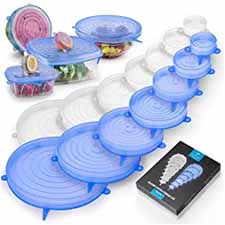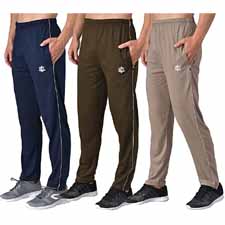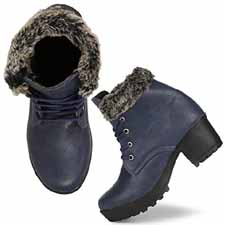Buy Online Winter Products from BuyBestBrands.in in Association with Amazon India
Winter Store
Winter is the coldest season of the year in the polar and temperate zones. It occurs every year after the fall and before the spring. Winter is caused by the Earth's axis being oriented away from the sun in that hemisphere. Different cultures define different dates as the onset of winter, and some use a definition based on the weather. When it is winter in the Northern Hemisphere, it is summer in the Southern Hemisphere and vice versa.
In many regions, winter is associated with snow and freezing temperatures. The time of the winter solstice is when the sun's height relative to the north or south pole is at its most negative (that is, the sun is farthest below the horizon when measured from the pole). The day on which this occurs has the shortest day and longest night, with day length increasing and night length decreasing as the season progresses after the solstice. However, the dates of the earliest sunset and latest sunrise outside the polar regions differ from the winter solstice date, and they depend on latitude, because of the variation in the solar day during the year caused by the Earth's elliptical orbit (see Earliest and last sunrise and sunset).
The inclination of the Earth's axis relative to its orbital plane plays a major role in the formation of weather. The Earth is at an angle of 23.44° to the plane of its orbit, causing different latitudes to point directly at the Sun as the Earth moves through its orbit. This variation brings seasons with it. When it's winter in the Northern Hemisphere, the Southern Hemisphere faces more directly toward the sun and thus experiences warmer temperatures than the Northern Hemisphere. Conversely, winter in the southern hemisphere occurs when the northern hemisphere is tilted more towards the sun. From the perspective of an observer on Earth, the winter sun has a lower maximum height in the sky than the summer sun.
During winter in both hemispheres, the lower elevation of the sun causes sunlight to strike the Earth at an oblique angle. Per unit area, therefore, a smaller amount of solar radiation falls on the earth. Furthermore, the light has to travel a greater distance through the atmosphere, so that the atmosphere can dissipate more heat. Compared to these effects, the effect of the changes in the distance from the Earth to the Sun (due to the Earth's elliptical orbit) is negligible.
The manifestation of the meteorological winter (freezing temperatures) in the northern, snow-prone latitudes is highly variable, depending on altitude, position relative to the sea breeze and amount of precipitation. For example, in Canada (a country with cold winters), Winnipeg on the Great Plains, far from the ocean, has a high of -11.3 °C in January and a low of -21.4 °C (− 6.5 °F ). In comparison, Vancouver on the west coast with a marine influence from moderating Pacific winds has a January low of 1.4°C (34.5°F) with days well above freezing at 6.9°C (44.4°F). f). Both places are located at 49° north latitude and in the same western half of the continent. A similar but less extreme effect is found in Europe: Despite their northern latitude, the British Isles do not have a single non-mountain weather station with average temperatures below freezing in January.
The celebratory customs associated in various countries with Christmas have a mix of pre-Christian, Christian, and secular themes and origins. Popular modern customs of the holiday include gift giving; completing an Advent calendar or Advent wreath; Christmas music and caroling; viewing a Nativity play; an exchange of Christmas cards; church services; a special meal; and the display of various Christmas decorations, including Christmas trees, Christmas lights, nativity scenes, garlands, wreaths, mistletoe, and holly. In addition, several closely related and often interchangeable figures, known as Santa Claus, Father Christmas, Saint Nicholas, and Christkind, are associated with bringing gifts to children during the Christmas season and have their own body of traditions and lore. Because gift-giving and many other aspects of the Christmas festival involve heightened economic activity, the holiday has become a significant event and a key sales period for retailers and businesses. The economic impact of Christmas has grown steadily over the past few centuries in many regions of the world.
Popular Categories on BuyBestBrands.in
Garden & Outdoors : Seeds, Plants, Plant Containers, Gardening Tools, Garden Decor, Pest Control, Barbecue & Outdoor Dining, Solar Power, Fertilizer & soil, Watering Equipment
Amazon Brand : Symbol, Inkast Denim Co, House & Shields, Jam & Honey, Solimo, Presto!, Symactive, Eden & Ivy, Vedaka, Tavasya, Myx













